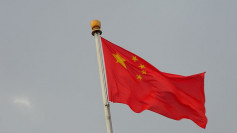Companies in the United States and China are looking for alternative sites for their businesses since the trade was heightened. Vietnam's cheap labor, geography, and economic stability is its edge over its competitors.
Vietnam leads the list of seven emerging Asian countries as manufacturing destinations according to Natixis SA. Natixis weighed their results according to the Asian countries demographics, wages and electricity costs, ranking in doing business and logistics, and manufacturing capability.
Trinh Nguyen, a senior economist at Natixis in Hong Kong, said that the country is poised to capture some of China's global market share in labor-intensive manufacturing. He added that the country is the clear winner from the trade war.
Vietnam's Prime Minister Nguyen Xuan Phuc boost the nation's profile in the manufacturing industry and export as the trade war continues. It is now considered a powerhouse in manufacturing and in exporting various items that range from shoes to smartphones. The country's trade doubles its gross domestic product. Its trade is greater than its neighboring Asian nation excluding Singapore.
Investors are attracted to the cheap labor in the country. Vietnamese production workers are paid at an average of $216 monthly. It is less than half of the wages of workers in China. Government subsidiaries also made electricity in the country cheaper. It is at 7 U.S. cent per kilowatt hour. It is lesser than Indonesia's electric price amounting to 10 U.S. cents and the Philippines' 19 U.S. cents.
Vietnam's labor force is one of the largest in Southeast Asia. The nation has an estimated workforce of 57.5 million. Malaysia has 15.4 million while the Philippines have 44.6 million as reported by the World Bank.
Vietnamese leaders support free trade and it is in agreement with South Korea and Europe. The nation also signed a Trans-Pacific trade pact with 10 other nation in March. The Nation inked an agreement with the European Union in June which is expected to eliminate all tariffs.
Vietnam's proximity to China also adds to the nation's edge. China and Vietnam are sharing a land border, unlike its competitors. Chinese companies looking for production materials from the United States will find it easy to transport goods through Vietnam. Vietnam is known as China's largest trading partner in Southeast Asia. The partnership between the two nations is essential to each other's economic growth.
Vietnam's Economy is also stable. It is one of the world's fastest-growing economies which is forecasted to grow by 7 percent this year.






